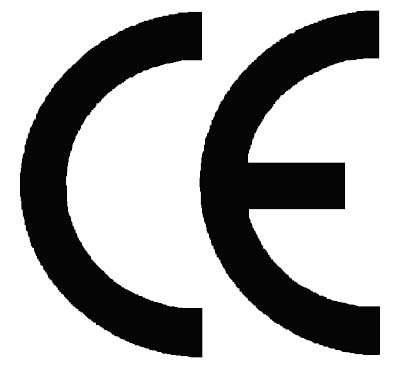CE Marking

The CE Mark, CE Marking and CE Certification
Any manufacturer and are planning to export a product which falls within the scope of one or more of the markets in any of the member states of the European Union (EU) or European Economic Area (EEA) then it is necessary that you apply for CE marking of your products against the essential requirements of all the applicable directives. Please note that CE Mark is a mandatory mark for most (around 70%) of the products sold on the EU market.
The New Approach Directives will provide a range of compliance routes for the product and show you, usually in a modular format, the available routes to compliance.
You must then decide which is the best fit for your company set up and follow the routes detailed in the Directive. In many cases the compliance route will require you to use a Notified Body to assist with your certification. The essential requirements of the New Approach Directives differ from directive to directive and product to product.
If the new product directives apply to your products and you want to continue to export to the European market (or introduce new products), then CE Marking will be crucial to your success.
It is NOT unusual nowadays that non-EU manufacturers and exporters have had their product(s) seized by customs officials in the European Union at the worst or returned to them because they do not have the CE marking affixed to the product(s). The CE Marking can be, at the same time, of both benefits and disadvantages.
With this “passport” your products can easily gain access to the entire European Union (EU) plus European Free Trade Association (EFTA) market.
There will be only one set of laws and regulations for the entire marketplace which guide the designing, manufacturing and labeling of products. The multiple and conflicting national restrictions on regulated products will be eliminated. Thus the CE Marking on your product will make your trade with EU countries cheaper and easier.
Your product will be made safer for consumers and thus the damage claims and liability premiums will be reduced.
New product directives may exceed the current national laws and regulations. It may cost a manufacturer extra to modify the currently existed design and/or production line in order to continue exporting to or gain access to this huge European market.
Extra costs in obtaining the product Certificate of Registration for CE Marking and any, if applicable, required testing certification.
What is CE Marking
The CE mark is a mandatory European marking for certain product groups to indicate conformity with the essential health and safety requirements set out in European Directives. The letters ‘CE’ are an abbreviation of Conformité Européenne, French for European conformity. Without the CE marking, and thus without
The CE mark is not a quality-mark. First, it refers to the safety rather than to the quality of a product. Second, most quality markings are voluntary opposite to the CE marking, which is mandatory for the products it applies to. CE indicates conformity with mandatory European safety requirements. European conformity is certified by following clear and understandable procedures, the so-called ‘conformity assessment procedures’

| Broad category | Product range |
|---|---|
| Low voltage (electrical equipment) | Electrical equipment |
| Simple pressure vessels | Welded vessels |
| Toys | Products or material |
| Construction products | Products |
| Electromagnetic | Apparatus |
| compatibility | Apparatus |
| Machinery | Machinery, Safety components |
| Personal protective equipment | Devices or appliances, Units of several devices or appliances, Protective devices or appliances, Interchangeable components |
| Non-automatic weighing instruments | Measuring instruments |
| Active implantable medical devices | Instruments, apparatus, appliances, material or other article, whether used alone or in combination (including any accessories or software necessary for its proper application) |
| Appliances burning gaseous fuels | Appliances, Fittings |
| Hot-water boilers | Combined boiler-body units, Appliances |
| Explosives for civil uses | Materials and articles |
| Medical devices | Instrument, apparatus, appliances, materials or other article, whether used alone or in combination (including the software necessary for its proper application) |
| Potentially explosive atmospheres | Equipment, Protective Systems, Safety devices, controlling devices and regulating devices |
| Recreational craft | Boats, Partly completed boats, Components |
| Lifts | Appliances, Safety components |
| Pressure equipment | Vessels, Piping, Special accessories,, Pressure accessories, Assemblies |
| Radio and Telecommunications terminal equipment | Equipment |
| In vitro diagnostic medical devices | Instruments, apparatus, appliances, materials or other articles, whether used alone or in combination (including the software necessary for its proper application) |
| Cableway installations designed to carry persons | |
| Marine equipment | Equipment |
| Transportable pressure equipment | Equipment |
| Refrigeration equipment | Equipment |
| Noise emission in the environment by equipment for use outdoors | Equipment |
| Interoperability of the Trans-European high-speed rail system | Components and accessories |
| Packaging and packaging waste |
